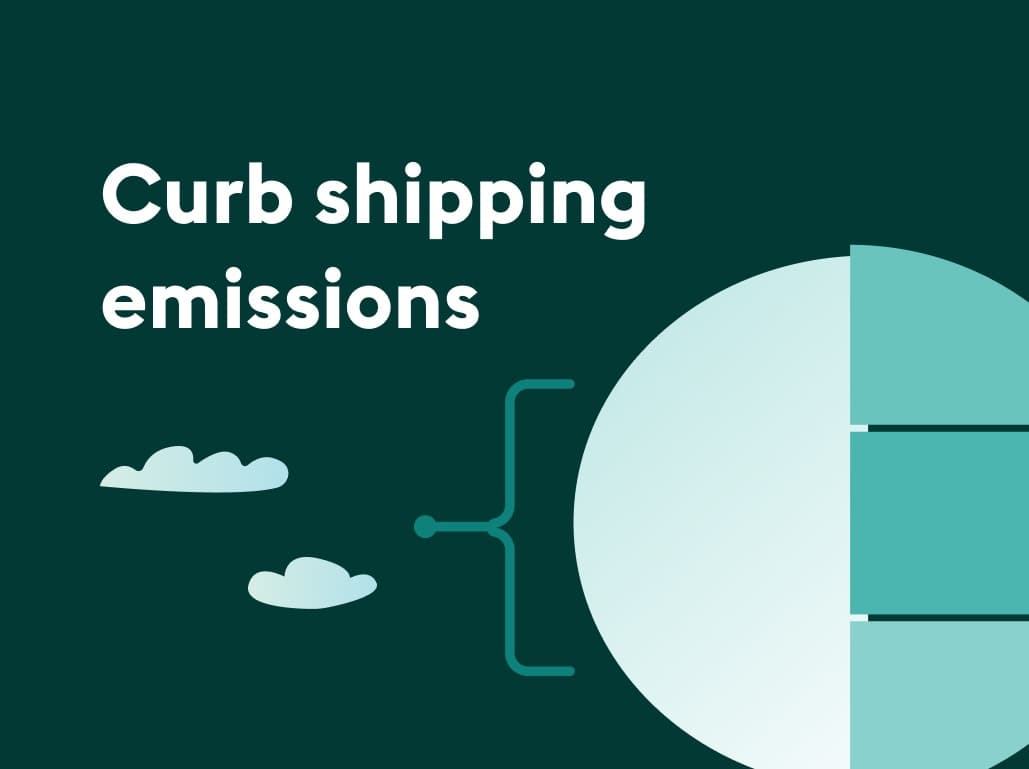Shipping emissions negatively impact the climate through the production of greenhouse gases. But the good news is that the IMO and the shipping industry are working towards curbing these emissions, and you too can contribute to this. Read this blog to know more. Also, find out how you can save hundreds of dollars for your business on container repositioning on xChange.
Shipping is essential to world trade, but unfortunately, ships run on fossil fuels — producing harmful greenhouse gases (GHG). Approximately 2.5% of the world’s CO2 emissions or 940 MtCO2 per year, are attributed to shipping. These emissions contribute to rising temperatures and eventually lead to climate change.
Thankfully, there are ways in which the industry can cut down shipping emissions. Being in the container business, if you want to contribute to this positive change too and reduce your carbon footprint, we have 4 words for you – avoid empty container repositioning.
That’s right, you can cut down shipping emissions by organizing your logistics better. When you avoid moving empty containers, you lessen the shipping industry’s burden on the environment by preventing the unnecessary burning of fossil fuels. And with xChange, you can put an end to empty container repositioning by leasing one-way container
If you have empty boxes you’d like to move to your desired location, use our public search below. You’ll see a list of container users currently looking for one-way containers on your stretch. Just select ‘I want to supply’ and fill out where you want your containers picked up and dropped off. This way, you’ll earn while you move your container, and also prevent unnecessary shipping emissions. Try it below!
Road to de-carbonization: Why reducing shipping emissions is important?
Reducing shipping emissions is important for the shipping sector because these emissions lead to adverse effects on the climate and the depletion of non-renewable fossil fuels.
You know by now that shipping emissions are mainly GHG. These harmful gasses — including carbon dioxide (CO2) — are directly responsible for triggering climate change. You know how big the carbon numbers produced by shipping are already but let’s break it down even further with an example.
If you’re shipping from China to Europe, you produce 1.913 kg of CO2 per container. If 20,000+ TEUs per vessel are moved on almost 90,000 cargo ships annually, the amount of CO2 produced will be overwhelming.
We can’t stress enough how severe the climate impact will be. If left unchecked, such carbon emissions can increase by 50-250% by 2050, according to an International Maritime Organization (IMO) study.
If you want to do your part to cut these emissions, schedule a demo
The IMO has already undertaken measures to prevent shipping emission-induced climate change. One of the important steps taken by IMO is drafting the Initial IMO GHG Strategy. Let’s look at it in detail below.
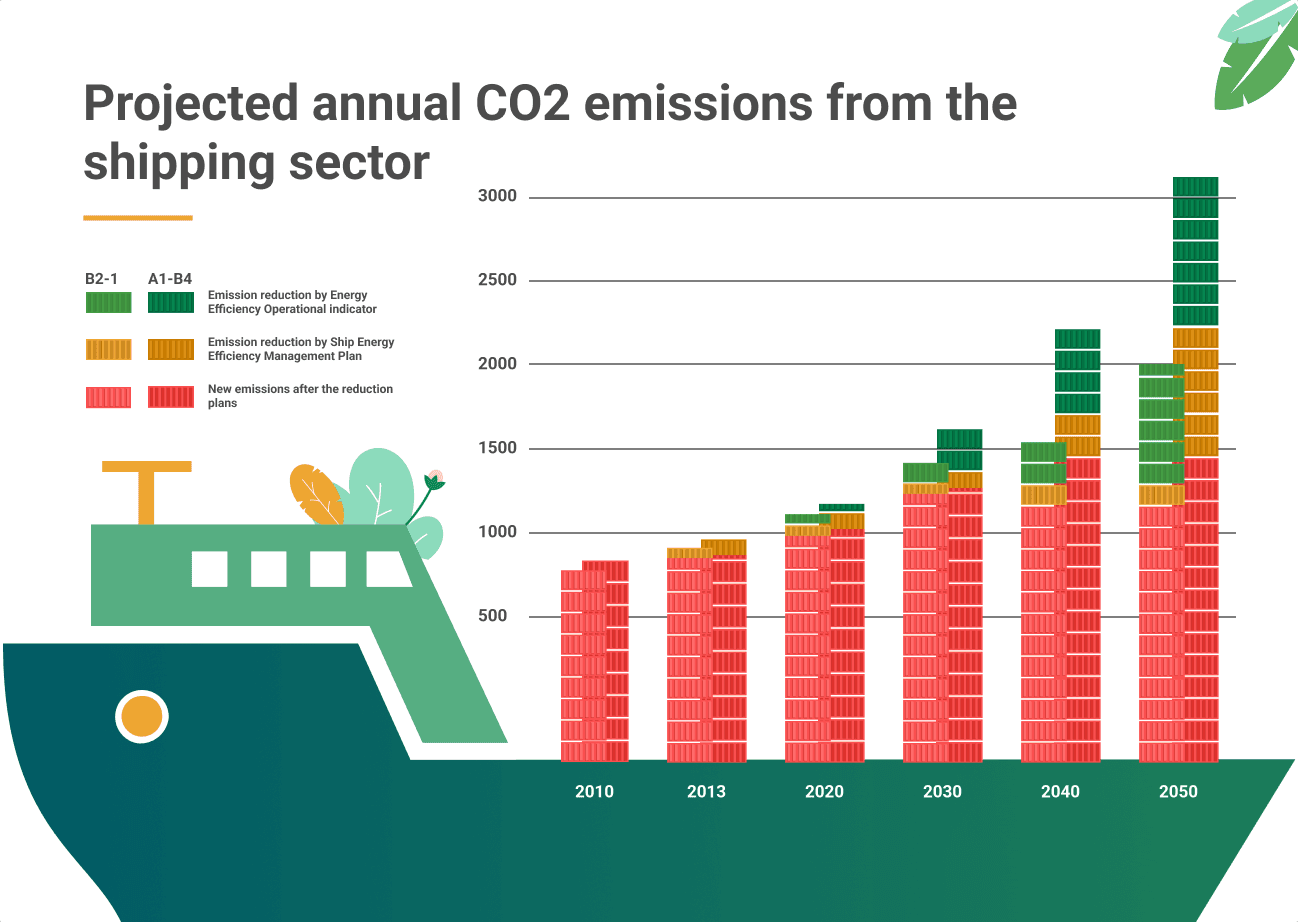
IMO and EEDI working towards cutting GHC shipping emissions
In 2018, IMO drafted a framework to reduce GHG emissions in international shipping. This framework was called the Initial IMO GHG Strategy. The strategy has two objectives to help achieve the temperature goals set by the Paris Agreement:
- Reducing the total annual GHG shipping emissions by 50% by 2050 as compared to 2008 levels.
- Phasing out the shipping emissions as soon as possible in this century.
To achieve their goals, IMO worked on three levels:
- Declining the carbon intensity of ships with the help of the Energy Efficiency Design Index (EEDI).
- Decreasing the carbon intensity of international shipping.
- Increasing GHG emissions to its peak and then bringing it to a decline through the different measures implemented.
IMO has been banking on EEDI to increase energy efficiency in shipping. Cutting down shipping emissions can only happen if ships become more energy-efficient. Hence, the EEDI is a technical measure that checks the energy efficiency of new ships. In a way, EEDI promotes new ships to use less polluting equipment and engines in their build.
The EEDI requires a minimum energy efficiency level per capacity mile (e.g. tonne mile) for ships of different types and sizes. So, the shipbuilders and designers have to build vessels that meet these energy-efficient requirements. These processes are tightened every five years. As a result, the shipping industry has to constantly innovate and come up with more energy-efficient ship designs.
Apart from this, there’s also the IMO data collection system in place which instructs owners of large ships (above 5,000 gross tonnage) to report on the fuel consumption of their ships. The data collected from the system helps IMO in making decisions for enhancing energy efficiency and reducing GHG emissions.
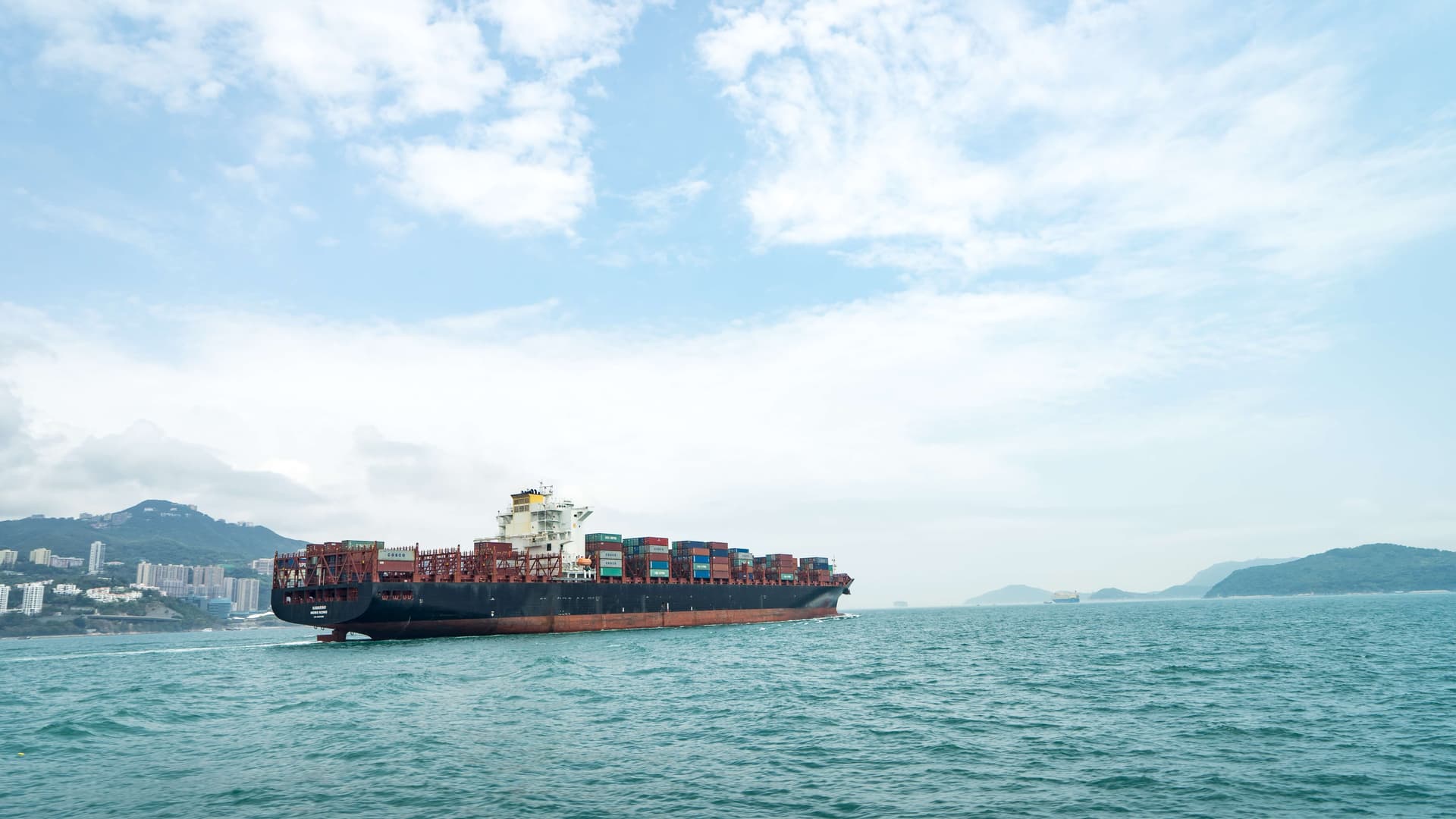
The 2023 framework for reducing shipping emissions by the IMO
All of the above is already in practice since 2018 and in 2023, the IMO GHG strategy has gone through a revision. Here’s what it states:
- Reduce CO2 emissions per transport network by at least 40% by 2030.
- Focus on using energy-efficient green fuels and implementing zero or near-zero GSoHG emission technologies in international shipping.
- Strengthen the energy efficiency design requirements for ships.
- Aim to achieve at least 5% to 10% of GSoHG emission technologies by 2030.
- Peak the GHG emissions in international shipping by (or around) 2050. Then pursue efforts towards phasing them out in line with the Paris Agreement’s temperature goals.
As you can see, the implementation of the IMO GHG strategy, the IMO data collection system, and the EEDI fall on the shipping lines, carriers, owners, and operators. But as container owners, you too can do your bit to reduce shipping emissions— avoid empty container repositioning by leasing containers one way on our online neutral marketplace. schedule a demo
Different ways shipping lines are adopting to reduce shipping emissions
With all these new strategies in place, many shipping lines are already jumping on the green bandwagon and adopting new initiatives to help cut down on carbon emissions. Let’s take a look at how these companies are going green:
- Maersk implemented the green bunkering service with methanol, a sustainable fuel, making this shipping line the world’s first container vessel to operate on green fuel.
- Maersk has also placed an order for 25 ships that will be powered by green methanol. Following this trend, other industry leaders like A.P. Moller-Maersk, CMA CGM, Cosco Shipping Holdings, HMM Company Limited, Stena Bulk, Hafnia, and XpressFeeders have also taken similar steps.
- In July 2023, COSCO Shipping successfully launched an electric container vessel (N997) with a capacity of 700 TEUs.
- Additionally, the Mediterranean Shipping Company (MSC) has joined SEA-LNG, a multi-sector industry coalition advocating for the benefits of the LNG pathway as a means to achieve maritime decarbonization.
- Wallenius Wilhelmsen, a Norwegian car carrier, has not only ordered vessels ready for green methanol bunkering but has also made preparations for introducing ammonia-powered ships into their fleet.
- Further contributing to environmental protection and carbon reduction goals, DB Schenker and Hapag-Lloyd have entered into an agreement to reduce emissions in container transports through the use of waste and residue-based biofuels.
- Evergreen Marine Corp has undertaken a systematic inspection and calculation of greenhouse gas emission inventories for its business operations, aligning with its commitment to environmental protection policies.
- Several major ports, including those in China, Singapore, Melbourne, Sweden, and Egypt, have begun providing green methanol fuel and establishing green methanol bunkering services for container vessels.
In addition to methanol, shipping lines are also showing growing interest in alternative fuels such as hydrogen, ammonia, and liquid natural gas (LNG).
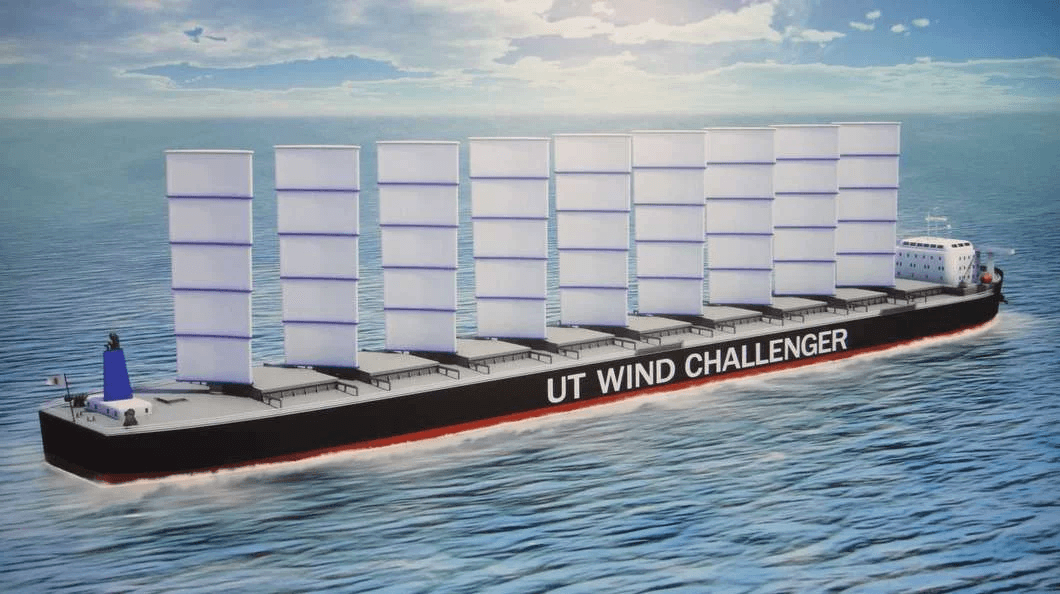
6 ways shipping lines can reduce shipping emissions to lower impact on climate change
It’s great to see how shipping lines are doing their part to reduce CO2 emissions. But there’s still a lot to do. And these six tips we’ve curated below will help propel the process:
- Utilize battery storage- The progress in energy storage will allow decarbonization. It’ll pave the way for all-electric ships. You’ll find it interesting to know that Ampere— the first all-electric ferry in Norway cuts shipping emissions by 95% and costs by 80%.
- Slow down the speed- Slow steaming can surely reduce fuel consumption. A 12% reduction in at-sea average speed leads to an average decrease of 27% in daily fuel consumption. If shipping lines are decreasing fuel consumption, they’re also decreasing GHG emissions.
- Take incremental measures- These are mostly short-term but would reduce emissions per vessel by as much as 5%. Shipping lines can improve the hull design, propeller optimization, and waste heat recovery to bring about such measures. Potential upgrades for ships also include reducing the friction with water. Shipping lines can fit ship bows with bulbous extensions below the water line to reduce drag. Or even paint hulls with low-friction coatings.
- Use renewable energy- You know that using renewable energy reduces carbon emissions significantly. In shipping, using wind assist or wind power for propulsion can be one such use of renewable energy.
- Switch to green fuel -More than 90,000 ships account for the burning of nearly 2 billion barrels of the heaviest fuel oil. The most significant reductions come with a fuel switch to low sulphur content. According to IMO’s 2020 regulation, only 0.5% sulphur can be used in commercial ship fuel globally. This sulphur cap will reduce the emission of sulphur dioxide (SO2).
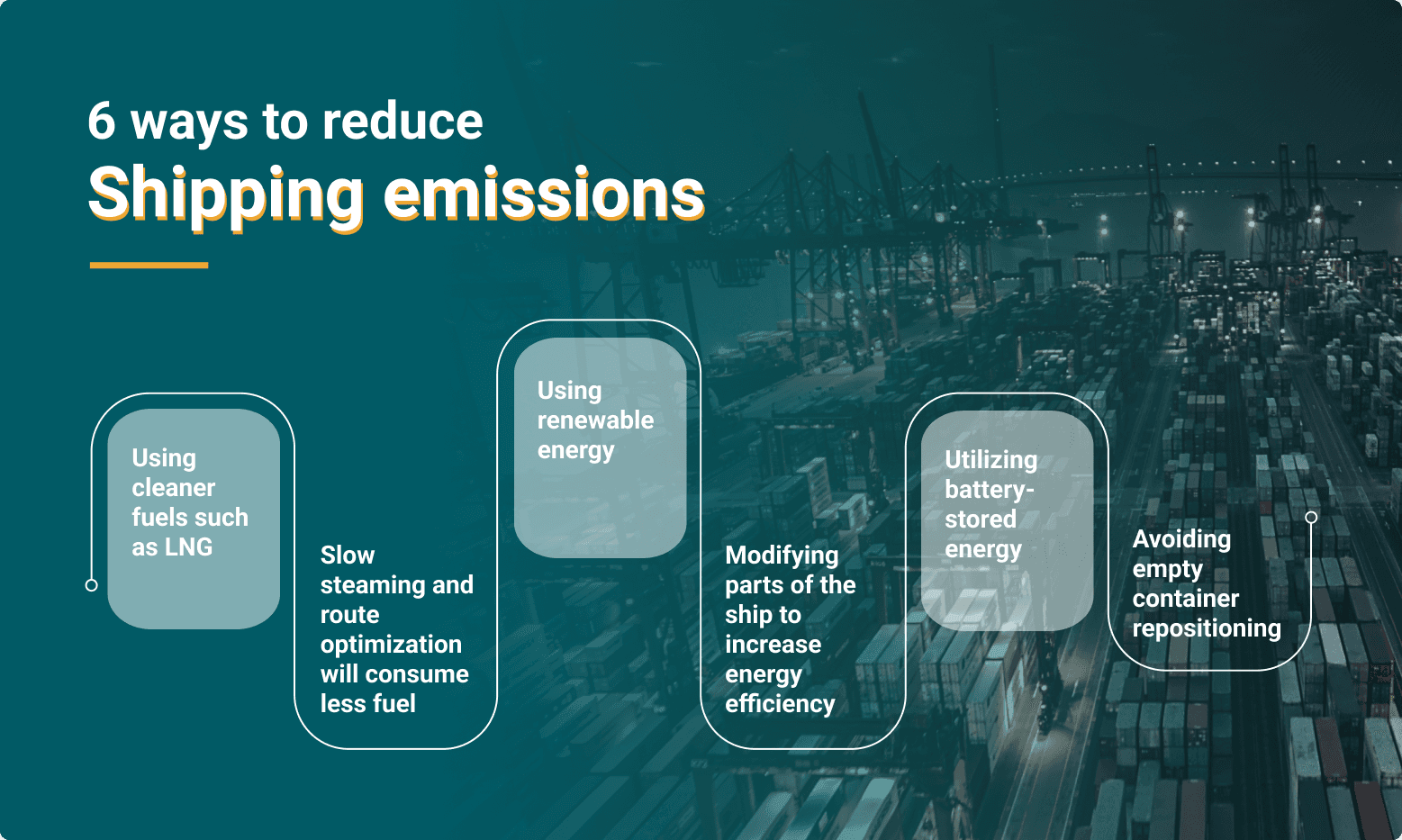
One-way container leasing can minimize shipping emissions
As a container owner, you too can help shipping lines reduce their emissions by avoiding empty container transport By curbing this process, you can save up to 30% of pollution caused by cargo ships and contribute to the change. Container xChange can help get one-way containers to avoid empty container transport.
On our platform, you can make your container available for one-way leasing. When you do that, you invite shippers to lease your container on your desired shipping routes They’ll move your boxes, pay you the rent (if applicable), and save you from paying the learn more. All this plus you help in decreasing shipping emissions.
Our global network comprises 1,500+ vetted container suppliers and lessors making transactions in 2500+ locations across the world. All our members go through a mandatory vetting process to ensure that you only work with verified names. The process is easy. You pick a company you like after seeing their profile, reviews, and ratings and speak to them through our marketplace directly via chats and calls.
We also have a standard one-way container lease agreements on Container xChange. During the one-way leasing transaction, all members sign the learn more to evade confusion as both parties remain informed and are on the same page. With this, you can avoid the hassle of networking by yourself and scheduling endless calls and lengthy email exchanges with multiple companies about contracts and terms. On xChange, we make your negotiations smoother and your work faster.
Click the banner below to connect with a vetted partner, negotiate a deal on your own terms, get your boxes repositioned in no time, and help save the environment too!

Putting a price on shipping emissions: How will carbon revenue be used?
Circling back to the earlier sections, we saw how the IMO is focusing on zero-carbon fuels and innovative technologies to green its energy footprint. Plus, they’re also looking to make these changes in a cost-effective and equitable way to make it easier for countries to adopt these greener strategies. And putting a price on carbon emissions is the method through which they plan to achieve this. This strategy can help to reduce GHG emissions and – as a by-product – generate revenue. It has been estimated, in shipping alone, that putting a price on carbon could raise $40 to $60 billion dollars each year between 2025 and 2050.
So, what would the money from carbon revenues be used for? You’ll find the answer to this in our insightful image below.
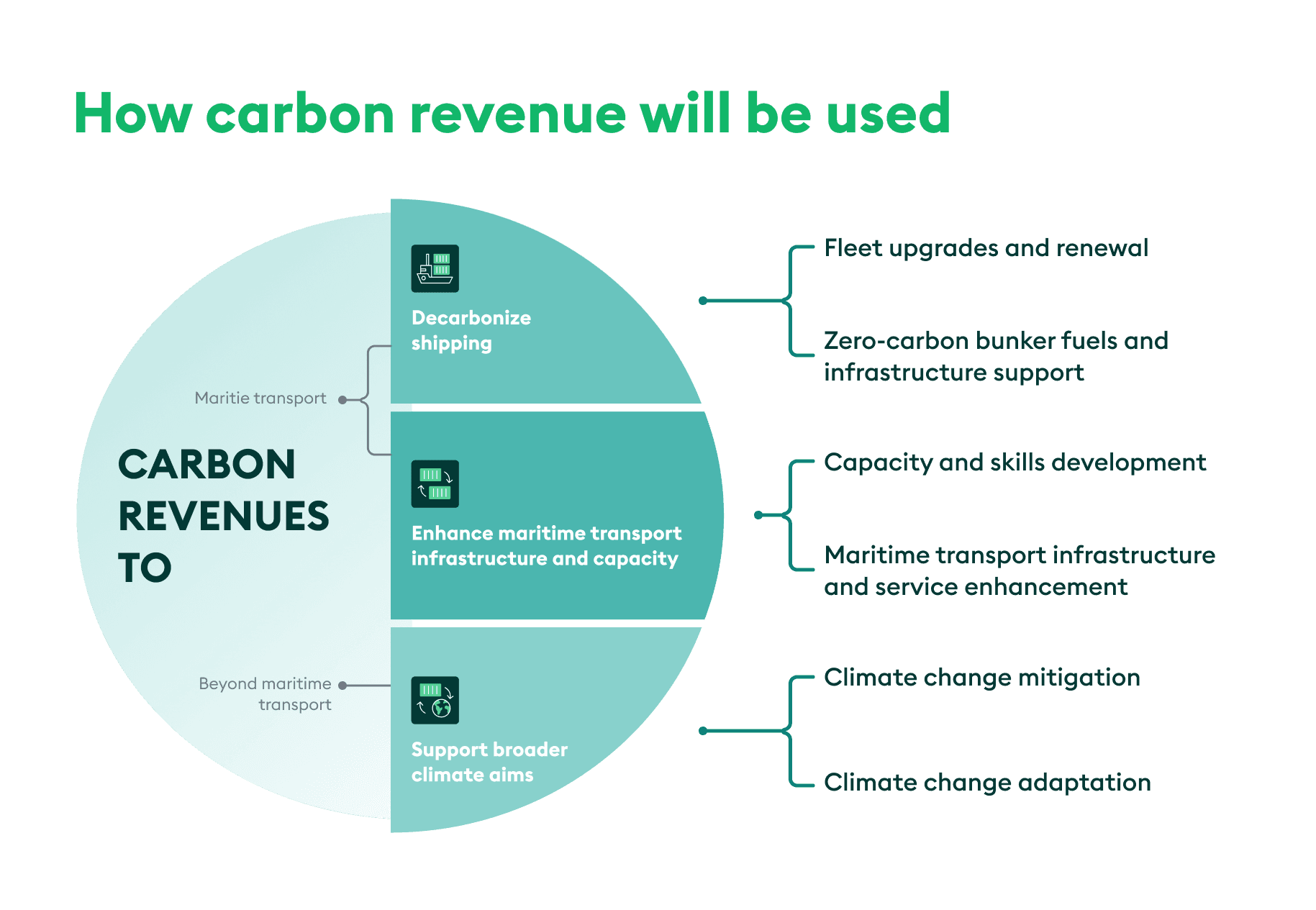
Reduce shipping emissions of GHG by moving empty boxes one way on Container xChange
With all your knowledge secured on how to reduce shipping emissions, it’s time to take action and do your part to help the environment. As you already know, Container xChange is here to help you with that by providing you with one-way leasing options, and container interchange with 1,500+ vetted members.
Another feature we offer that can make moving your boxes easier is our real-time tracking through which you can monitor your box and effectively plan your container movements. This ensures that containers are in the locations where they need to be and that all your operations flow smoothly. Another plus with us is our easy and secure payment handling feature – the xChange wallet which manages all your transactions in one place and sends you one consolidated bill at the end of each month.
Here’s what Zarina Wang, from the Container Operation Department, Neptune Logistics has to say:
“We discovered xChange in 2019 and immediately became a leasing member. Since joining, we’ve made 39+ reliable partners overseas and have successfully repositioned 1000s of our empty containers. And, we’ve simplified our container operations while doing so! No more back-and-forth emails and cold calling.”
What are you waiting for? Join our platform and be a part of the plan to save our planet while also saving your company hundreds of dollars on empty container repositioning. Click on the banner below!
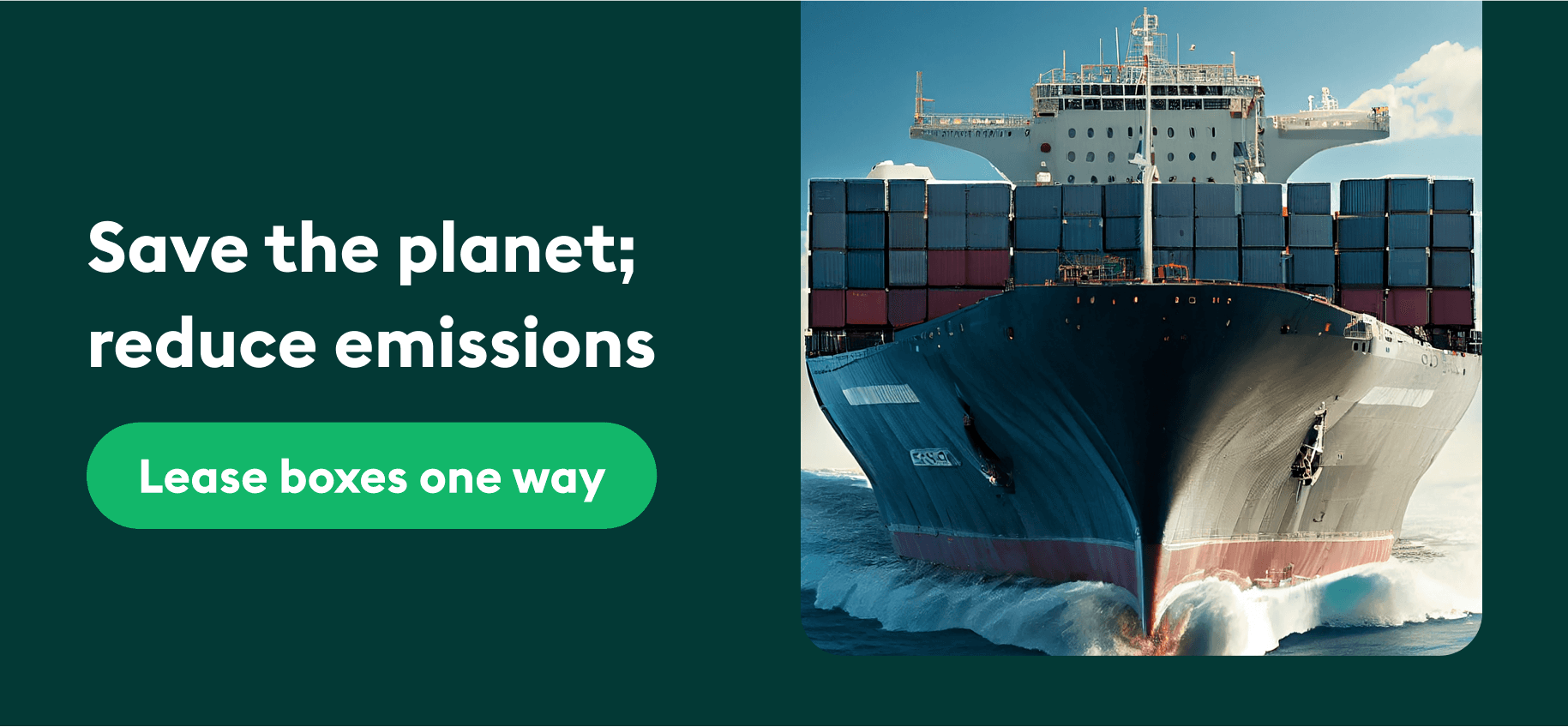
How much CO2 is produced from shipping?
The shipping industry produces 940 million tonnes of CO2 annually. This accounts for 2.5% of the world's total CO2 emissions.
Why is shipping bad for the environment?
Shipping is bad for the environment because it produces greenhouse gasses. These GHG emissions lead to climate change.
Who is responsible for shipping emissions?
According to international guidelines, the shipping emissions produced when a ship is sailing between two countries are the responsibility of the International Maritime Organisation (IMO). When the ship sails between two ports of the same country, the responsibility for emissions falls on that country.
